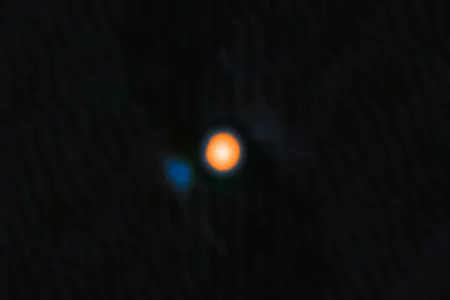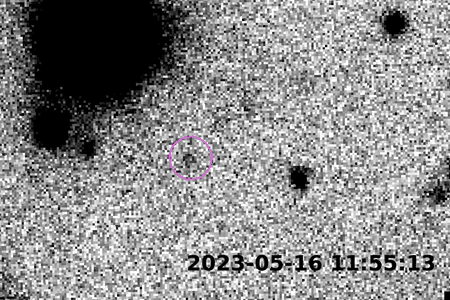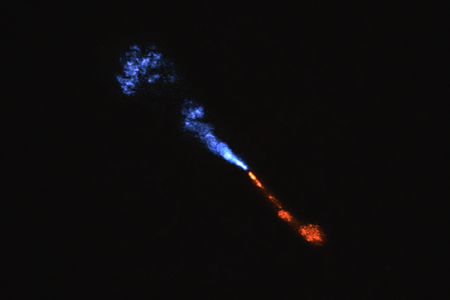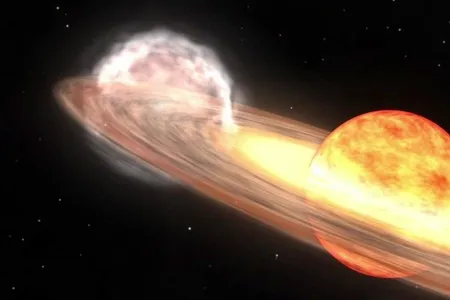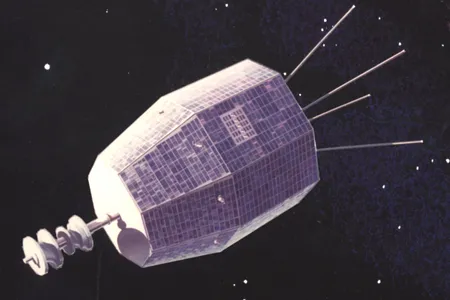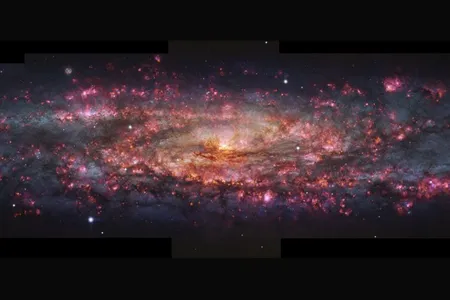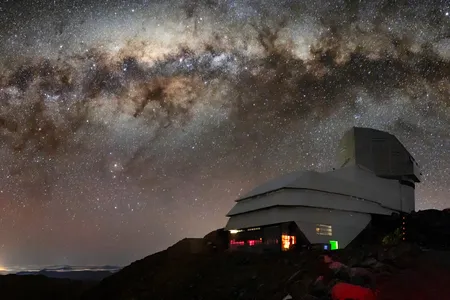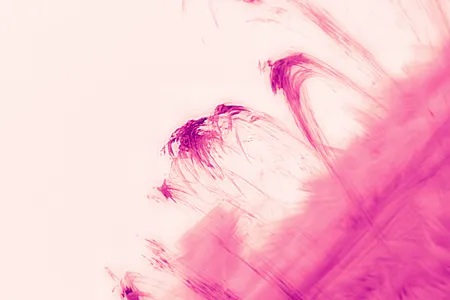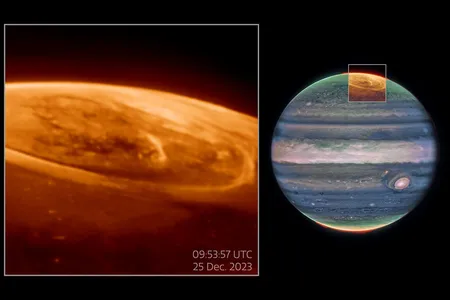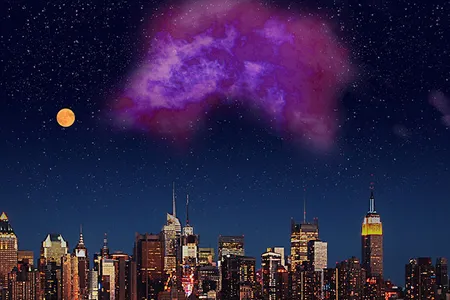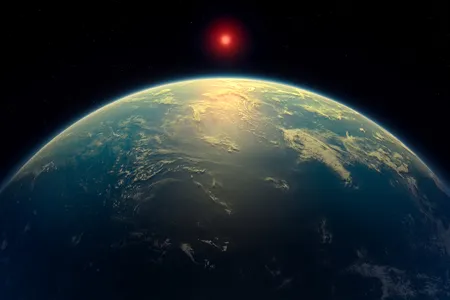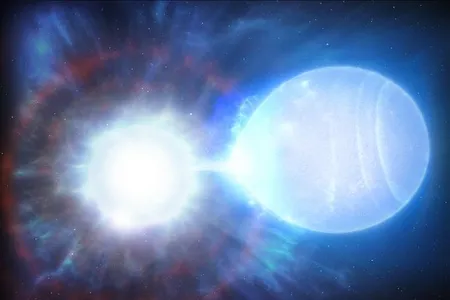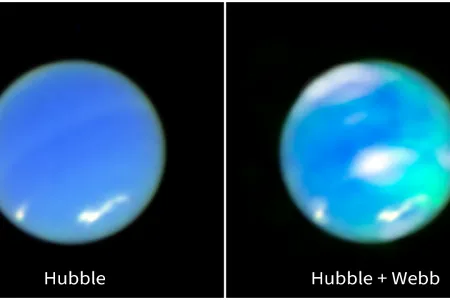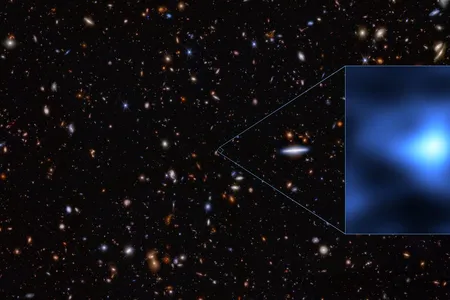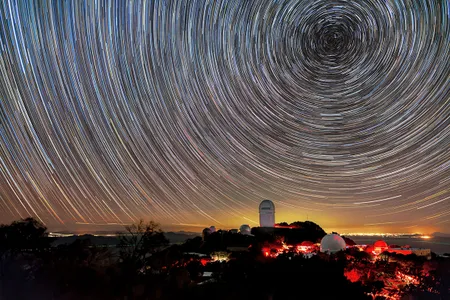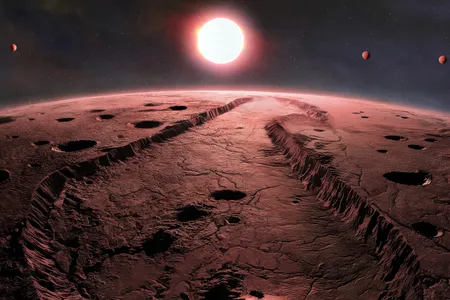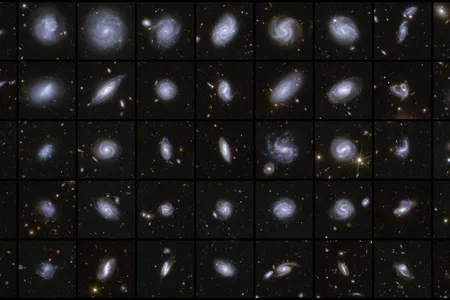Astronomers Say They’ve Finally Spotted Betelgeuse’s Companion Star, Long Predicted to Exist but Never Seen
The discovery, if confirmed, could explain Betelgeuse’s mysterious six-year oscillations in brightness
Astronomers Discover ‘Ammonite,’ a Mysterious Distant Object That Could Shed Light on Our Solar System’s History
The celestial body’s unusual orbit “implies that something extraordinary occurred” in the early days of the solar system—and throws a wrench in the Planet Nine idea
For the First Time, Astronomers Capture ‘Smoking Gun’ of Early Solar System Formation
Telescopes detected the first stages of hot minerals condensing from gas around a young star called HOPS-315
Rare Appearance of Two Novas at Once Illuminates the Southern Sky. Here’s How to Get a Chance to See It
The “new stars” are best seen from the Southern Hemisphere, but people have spotted them from the United States by looking near the southern horizon
Astronomers Detected a Mysterious Radio Burst. It Turned Out to Be From a Dead NASA Satellite
The signal detected last year came from Relay 2, a communications satellite that has been defunct since 1967
The James Webb Space Telescope Reveals Its First Direct Image Discovery of an Exoplanet
Researchers identified the likely planetary candidate’s infrared light after blocking out its host star’s overwhelming glare
See the First Breathtaking Images Captured by the Powerful New Telescope at the Rubin Observatory
Featuring never-before-seen views of galaxies and more than 2,100 newly discovered asteroids, the observations are only a taste of what to expect from the telescope’s upcoming decade-long survey
Stunning New Image of the Sculptor Galaxy Captures the Cosmic Landscape in Thousands of Colors
The galaxy sits in a sweet spot that allows astronomers to study it in ways that can’t be applied to even our own Milky Way
The World’s Largest Camera Is About to Unveil Its First Photos of Space. Here’s How to Follow Along With a Live Stream
The revolutionary Vera C. Rubin Observatory will unveil new insights about our universe—and you can catch a first look at a local event or online on Monday
See the Highest-Resolution Views of the Sun’s Corona, as Wisps of Plasma Dance in Crystal Clear Detail
Astronomers have captured videos of the sun without the typical blur caused by turbulence in Earth’s atmosphere
Check Out Jupiter’s Stunning Auroras, Which Are Hundreds of Times Brighter Than Earth’s, in the James Webb Telescope’s Latest Images
The infrared views, captured in 2023, shed light on the giant planet’s atmosphere and magnetosphere—but they also reveal something unexpected
Astronomers Discover a Giant, Glowing Molecular Cloud Hidden in Earth’s Cosmic Neighborhood
The cloud, named Eos after the Greek goddess of dawn, had eluded researchers because it contains very little carbon monoxide
Chemical Hints on a Distant Planet Offer ‘Strongest Evidence Yet’ for Life Outside Our Solar System, Astronomers Say
The James Webb Space Telescope spotted possible signatures for life in an exoplanet’s atmosphere. Still, researchers caution it’s far too early to call the findings definitive
High School Student Discovers 1.5 Million Potential New Astronomical Objects by Developing an A.I. Algorithm
The 18-year-old won $250,000 for training a machine learning model to analyze understudied data from NASA’s retired NEOWISE telescope
Astronomers Discover a Rare White Dwarf Pair Doomed to Explode in a Brilliant Supernova
The event will be ten times brighter than our Moon in the night sky, but never fear, it won’t happen for another 23 billion years
Check Out Neptune’s Beautiful Auroras, Captured for the First Time by the James Webb Space Telescope
Scientists suspected the ice giant hosted auroras—and had already observed them on Jupiter, Saturn and Uranus. But an observation of Neptune’s lights remained elusive for decades
Scientists Detect ‘Unexpected’ Oxygen in the Most Distant Galaxy Ever Found, Defying Ideas About the Early Universe
The findings suggest galaxies formed much more quickly than astronomers assumed
Mysterious Dark Energy Might Be Weakening—and That Could Upend Predictions About the End of the Universe
Astronomers thought dark energy was a constant. But now, findings from the Dark Energy Spectroscopic Instrument provide even more evidence that it may be fluctuating
Astronomers Find Four New Exoplanets Orbiting a Neighboring Star, the ‘White Whale’ of Planet Seekers
More than 60 years after the first debunked discovery of a planet orbiting Barnard’s Star, the closest single-star system to Earth, a pair of telescopes has revealed multiple rocky worlds around it
The First Big Data Drop From the Euclid Space Telescope Unlocks a ‘Treasure Trove’ of Insights on the Universe’s Mysteries
The European Space Agency’s “dark universe detective” discovered millions of new galaxies and offers potential clues about dark matter
Page 1 of 6
